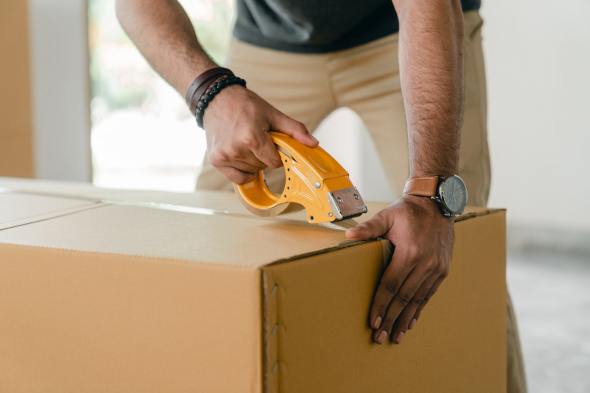Eco-Friendly Packaging Market: A Lucrative Market Projected to Reach USD 430.38 Billion by 2032
The global eco-friendly packaging market is estimated to grow from USD 207.86 billion in 2022 at 7.6% CAGR (2023-2032) to reach an estimated USD 430.38 billion by 2032.
Eco-friendly initiatives are gaining increasing attention, particularly from various consumer segments. Consumers now prioritize products that are sourced and manufactured sustainably. This consumer preference has resulted in sustainable products experiencing a remarkable growth rate of 2.7 times faster than traditional goods, despite the price premiums associated with eco-friendly alternatives.
- Eco-friendly packaging is defined as packaging that minimizes harm to humans and the environment compared to alternative options. However, it lacks standardized parameters for measurement, making it a subjective label.
- About 75% of organizations have committed to eco-friendly packaging, but only 30% are prepared to meet regional regulatory standards and internal sustainability goals. Fewer than 30% have established clear metrics for recyclability and eco-friendliness.
- Eco-friendly initiatives are gaining traction, driven by consumer preferences for sustainable products. Sustainable goods grow 2.7 times faster than traditional goods, despite potential price premiums.
Consumers who prioritize purchasing the eco-friendly packaging for some products.
Regarding consumers’ most favoured eco-friendly product categories, a substantial majority of millennials (60%) opt for environmentally friendly food options. Additionally, cleaning products and clothing emerge as popular choices, particularly among Generation Z, with 56% expressing a preference for sustainable apparel. Moreover, water bottles and coffee cups are prominently featured on the list of preferred eco-friendly products. It is worth noting that approximately 20% of respondents also indicated a penchant for eco-conscious appliances, indicating a growing trend in sustainable consumer behaviour. Furthermore, a significant proportion of women (34%) prioritize sustainability when selecting makeup and skincare products.
Overall, this data signifies the evolving landscape of consumer preferences, where green products are gaining traction across various categories. Businesses must recognize these trends and align their offerings with sustainable practices to cater to the growing demand for environmentally friendly alternatives. By understanding and catering to consumer preferences for green products, companies can capitalize on the opportunities the burgeoning market presents for sustainable goods and services.
The COVID-19 pandemic has had a significant impact on sustainability in packaging
Prior to the COVID-19 crisis, sustainability was a major focus across the entire packaging value chain. Consumers were increasingly aware of the environmental impact of the packaging industry, prompting legislative responses worldwide. Recognizing the importance of sustainability as part of their value proposition, fast-moving consumer goods (FMCG) and retail companies made significant commitments to improving the recyclability of their packaging. This combination of consumer demand and regulatory pressure significantly influenced upstream players in the packaging industry, who were expected to contribute to meeting these commitments.
Growing demand from the food and beverage sector for biodegradable packaging
The increasing market demand for biodegradable packaging, primarily driven by the food and beverages industry, presents significant growth opportunities. Food and beverage manufacturers increasingly embrace sustainable practices by adopting reusable and recycled packaging materials. This strategic shift is driven by the objective of reducing packaging waste and aligning with stringent government regulations surrounding sustainability.
- For instance, on April 6, 2023, California Olive Ranch introduces a new line of recyclable aluminium oil bottles, catering to the growing consumer demand for sustainable packaging solutions in the food industry.
Environmental Innovation in Action Because Major Market Players Empowering Sustainability Through Technological Advancements
Technological advancement plays a pivotal role in driving the growth of the eco-friendly packaging market. Recognizing the importance of sustainable practices, major market players have been proactively investing in research and development to create innovative technologies that enable a shift towards environmentally friendly packaging solutions, particularly in the food packaging sector.
- Instance, an illustration of this is Huhtamäki Oyj, which introduced a ground-breaking ice cream packaging solution in 2022, leveraging paper-based technology.
Segments covered in the report:
By Type
- Recyclable
- Degradable
- Reusable
By Material Type
- Paper and Paper Board
- Plastic
- Metal
- Glass
- Starch-Based Materials
- Others
By Product Type
- Bags
- Pouches and Sachets
- Boxes
- Containers
- Films
- Trays
- Tubes
- Bottles and Jars
- Cans
- Others
By Technique
- Active Packaging
- Molded Packaging
- Alternate Fiber Packaging
- Others
By Layer
- Primary Packaging
- Secondary Packaging
- Tertiary Packaging
By Application
- Food and Beverages
- Pharmaceutical
- Personal Care
- Home Care
- Others
By Regional
- North America
-
-
- U.S.
- Canada
- Mexico
-
- Europe
-
-
- Germany
- France
- U.K.
- Italy
-
- Asia Pacific
-
-
- China
- India
- Japan
- Australia
-
- Central & South America
-
-
- Brazil
-
- Middle East & Africa
-
- South Africa
Report Source https://www.towardspackaging.com/insights/creating-good-packaging-for-eco-friendly-packaging







Leave a Reply